Jesus Prayers in Public Schools: Who’s For It and Who’s Against It—And Why It Matters
Church, State, and Public Schools
This post has been unlocked through a generous grant from the Lilly Endowment for the Association of Religion Data Archives (ARDA). The graphs you see here use data that is publicly available for download and analysis through link(s) provided in the text below.
I’ve always found survey questions about prayer in public schools somewhat difficult to interpret because the context matters so much. For example, what if a local school district simply offers a quiet time for students to meditate or read? Students could choose to pray during this period, but it wouldn’t be mandatory. Or what if the teacher guides the class in a moment of self-reflection, encouraging students to set their intentions for the day?
The concept of “prayer in public school” seems largely dependent on how explicitly religious those prayers are. That’s why I was particularly interested in a clear, unambiguous question included in the Pew Religious Landscape Study 2023-2024 (hosted by the ARDA).
The survey asked respondents: "Allowing public school teachers to lead their classes in prayer that refer to Jesus: favor or oppose?"
That’s about as direct as it gets—Christian prayers led by teachers in public schools. Nationwide, 27% of respondents strongly favored this, and another 26% favored it. Together, that’s just over half of American adults supporting teacher-led, explicitly Christian prayer.
However, when breaking down responses by respondents' decade of birth, a much richer and more nuanced story emerges.
You can see that there is little variation among those born between 1940 and 1969. In each of these birth cohorts, there is strong support for Christian prayers in public schools—about two-thirds favor such a proposal, while only around 15% strongly oppose it. However, among younger Americans, these percentages start to shift, and opposition gradually increases. For those born in the 1970s, about 56% favor Christian prayers in school, which is the last generation where supporters outnumber opponents.
Has Christian Nationalism Intensified or Faded?
This post has been unlocked through a generous grant from the Lilly Endowment for the Association of Religion Data Archives (ARDA). The graphs you see here use data that is publicly available for download and analysis through link(s) provided in the text below.
Support then drops to 47% among adults born in the 1980s, falls further to 40% for those born in the 1990s, and among the youngest adults, only 38% remain in favor. Interestingly, the percentage of those who strongly oppose (approximately 33%) remains consistent for the last two birth cohorts.
In essence, while the majority of Americans supported Jesus-referenced prayers in 2024, that is unlikely to hold true in the coming decades as younger generations—who tend to oppose such prayers more—constitute a growing share of the population. What explains this generational shift? The answer is straightforward: there are significantly more Christians among older birth cohorts than among younger ones. This becomes clearer when examining responses broken down by religious tradition.
One can clearly divide the Christian tradition into two camps: those who strongly favor Christian prayers in public schools and those who are less enthusiastic about the idea. The two traditions most supportive of Jesus-referenced prayers are evangelicals and Black Protestants. In both groups, a majority strongly favor such proposals, with essentially no strong opposition.
In contrast, Mainline Protestants and Roman Catholics are more reserved on the issue. Among mainliners, 41% oppose Christian prayers in public schools, while 36% of Roman Catholics feel similarly.
It should come as little surprise that non-Christians are generally not keen on allowing school teachers to lead prayers referencing Jesus. Still, about one third of respondents from “other world religions” such as Judaism, Islam, Hinduism, and Buddhism were in favor—a figure likely higher than many might expect. Among the non-religious, only 26% support such a proposal.
This is exactly where my interest was piqued. I wanted to explore the notion of Christians who oppose Jesus-referenced prayers in public schools. This helps illuminate the broader concept of Christian nationalism. It seems reasonable to say that a Christian who is uncomfortable with explicitly Christian prayers in public schools does not align with the typical definition of Christian nationalism.
Below is the share of Christians who oppose ‘Jesus prayers’ broken down by the decade of birth of the respondents.
There is a clear inflection point across birth cohorts. Among Christians born from the 1940s to those born in the 1970s, there is little substantive difference in their views on this question: opposition stands at 22% for the former and 25% for the latter. It is fair to say there is no significant generational gap between Christians in their seventies and those in their fifties, which is quite notable.
However, opposition to explicitly Christian prayers begins to rise noticeably among younger cohorts. For Christians born in the 1980s, opposition reaches 31%, increases to 34% among those born in the 1990s, and climbs to nearly 40% among the youngest adult Christians. This represents almost a doubling of opposition between Christians born roughly sixty years apart.
One might reasonably suspect that this trend is partly driven by the fact that younger Christians grew up in a much more religiously diverse society. For example, about 45% of individuals born in the 2000s identify as non-religious, compared to just 13% among those born in the 1940s.
Next, let me show how opposition varies by religious tradition and generation.
This kind of graph provides a crucial reason not to treat all Christians as a single, homogeneous group. There are vast differences depending on whether someone is evangelical, Catholic, or belongs to other traditions.
Given what we have already seen, it’s no surprise that evangelicals and Black Protestants express the lowest levels of opposition to explicitly Christian prayers in schools. What really stands out to me is that even among the very youngest adults in this sample, opposition remains relatively low. Among evangelicals in their mid-twenties or younger, only about one-quarter oppose prayers to Jesus; the same proportion applies to younger Black Protestants.
Put another way: an evangelical teenager today is more likely to support Christian prayers in school than a Roman Catholic born in the 1940s. That is pretty striking.
For both Catholics and mainline Protestants, opposition has consistently been robust across cohorts, but it does increase among younger birth groups. Among the youngest adults in these traditions, roughly half oppose Christian prayers in public schools—around double the rate of their evangelical and Black Protestant peers.
While exploring this data with various demographic controls, I found an important factor that deserves special attention: race plays a significant role in this discussion. What follows is a breakdown of the share of Christians who oppose Christian prayers in schools across six different racial groups.
Notice the clear outlier: African-American Christians. Among White, Hispanic, and Asian Christians, about 30% oppose the idea that Christian prayers belong in public schools. But among Black Christians, only 20% oppose such practices. This is a key insight—the common perception of Christian Nationalism often ties it closely to White evangelical Protestants. However, this data (and others like it) reveal an interesting story about the Black Church and its unique views on the separation of church and state.
The graph strongly suggests that race plays a significant role in support for public school teacher-led prayers referencing Jesus, but other factors likely influence this relationship as well. Variables like education, income, age, and gender could all impact opinions. And of course, we can’t overlook the role of partisanship.
To explore these relationships more rigorously, I restricted the sample to Christians only and specified a logistic regression model. In this model, I held key factors constant at their means, including gender, age, income, education, and church attendance.
Now we can gain a clearer understanding of how both race and partisanship shape support for ‘Jesus prayers’ in public schools.
Among Republican Christians, the story of race is quite straightforward. According to the model, it doesn’t significantly matter whether a respondent is White, Black, Asian, Hispanic, or from another group. Approximately 15% of Republican Christians oppose a teacher leading a specifically Christian prayer in schools.
How Do Home Schooled College Students Compare to Those From Public Schools?
I grew up in a pretty conservative Southern Baptist Church in rural southern Illinois. I was there three of four times a week, on average, during my four years of high school. Our youth group was this odd mish mash of all kinds of kids. I had gone to Sunday School with some of them from the time we were in the nursery. Others were just there because the…
However, among non-Republican Christians, opposition to such prayers is significantly higher, though it varies considerably by race. White non-Republican Christians show the highest opposition, with about 46% opposing the policy. In contrast, opposition among non-white non-Republican Christians (including Black Democrats and Independent Asians) is notably lower, at around 30%.
In other words, White Christians who are not Republicans are substantially more likely to oppose teacher-led prayers referencing Jesus in public schools than their non-white counterparts. This highlights a recurring tension within the Democratic coalition: policies and rhetoric promoting a strong separation of church and state resonate well with White Democrats but face more resistance among Democrats of color.
This exercise is valuable because it adds nuance to discussions around Christian nationalism. While evangelicals and Republicans broadly seek greater infusion of Christianity into public life, it is more difficult to generalize about other groups. For example, Black Protestants tend to be more comfortable with a porous boundary between church and state, whereas White Catholics (especially non-Republicans) tend to be more opposed.
This underscores why blanket statements should be avoided when discussing social science findings. While many results may describe trends across large groups, they rarely apply uniformly to every subgroup. Nuance is always necessary.
Code for this post here.
Other relevant posts on Ahead of the Trend:
Who Hasn’t Heard About Christian Nationalism?
Has Christian Nationalism Intensified or Faded?
Ryan P. Burge is a professor of practice at the Danforth Center on Religion and Politics at Washington University.




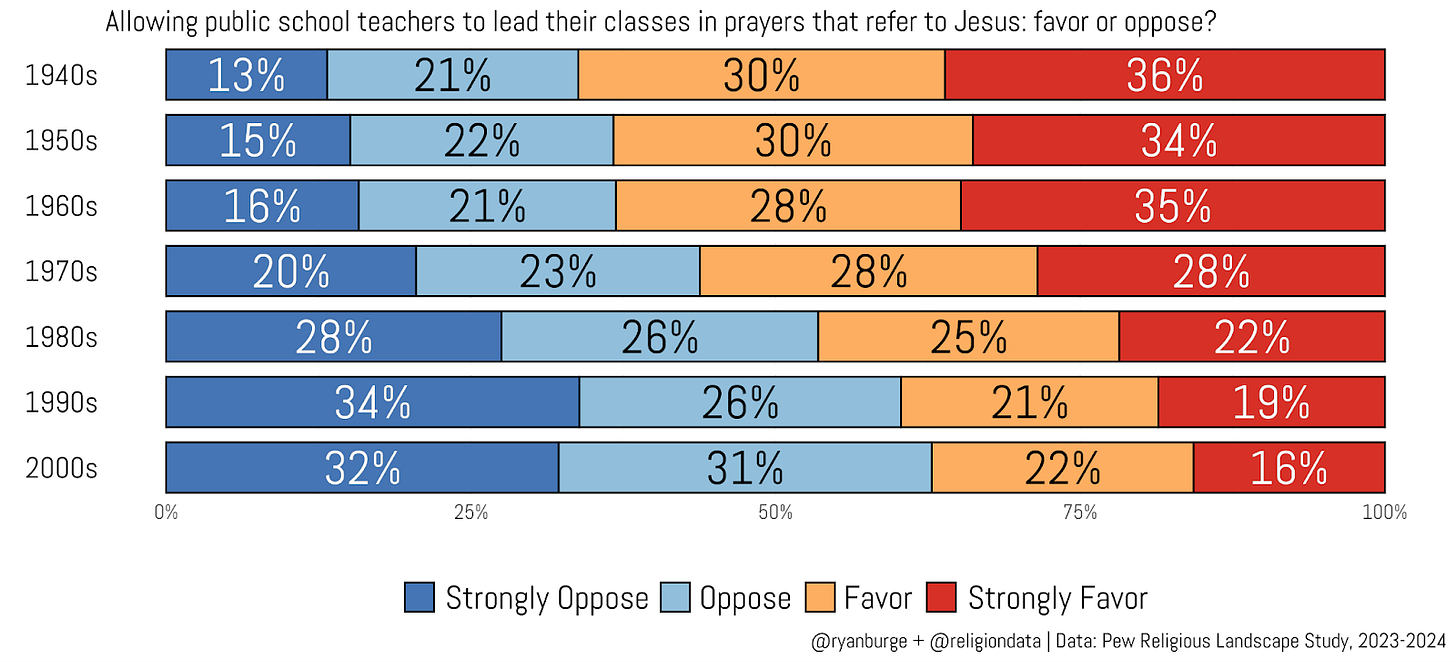
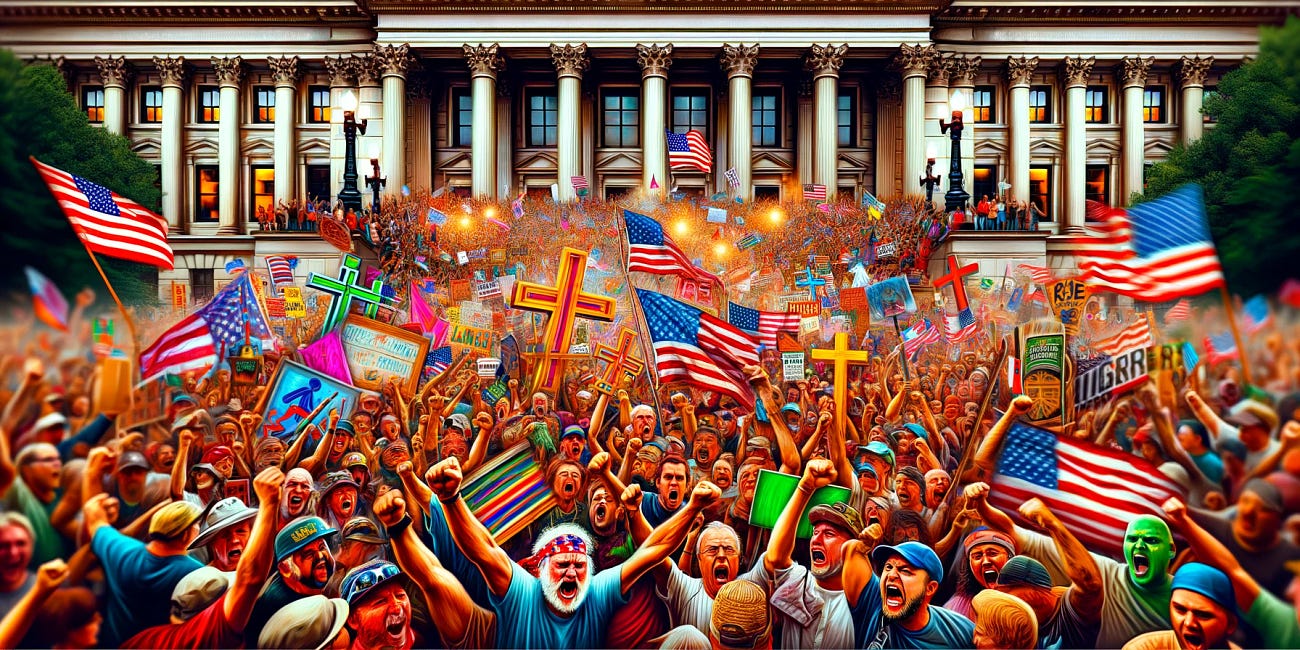
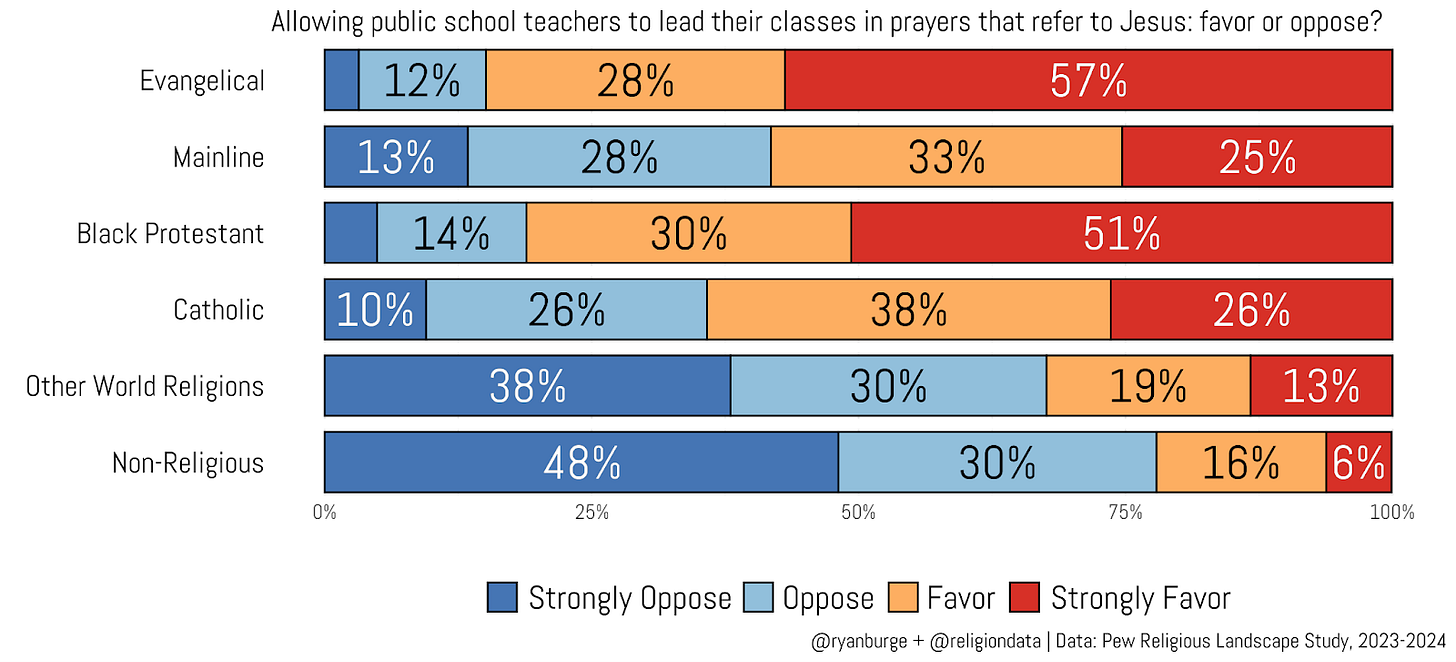
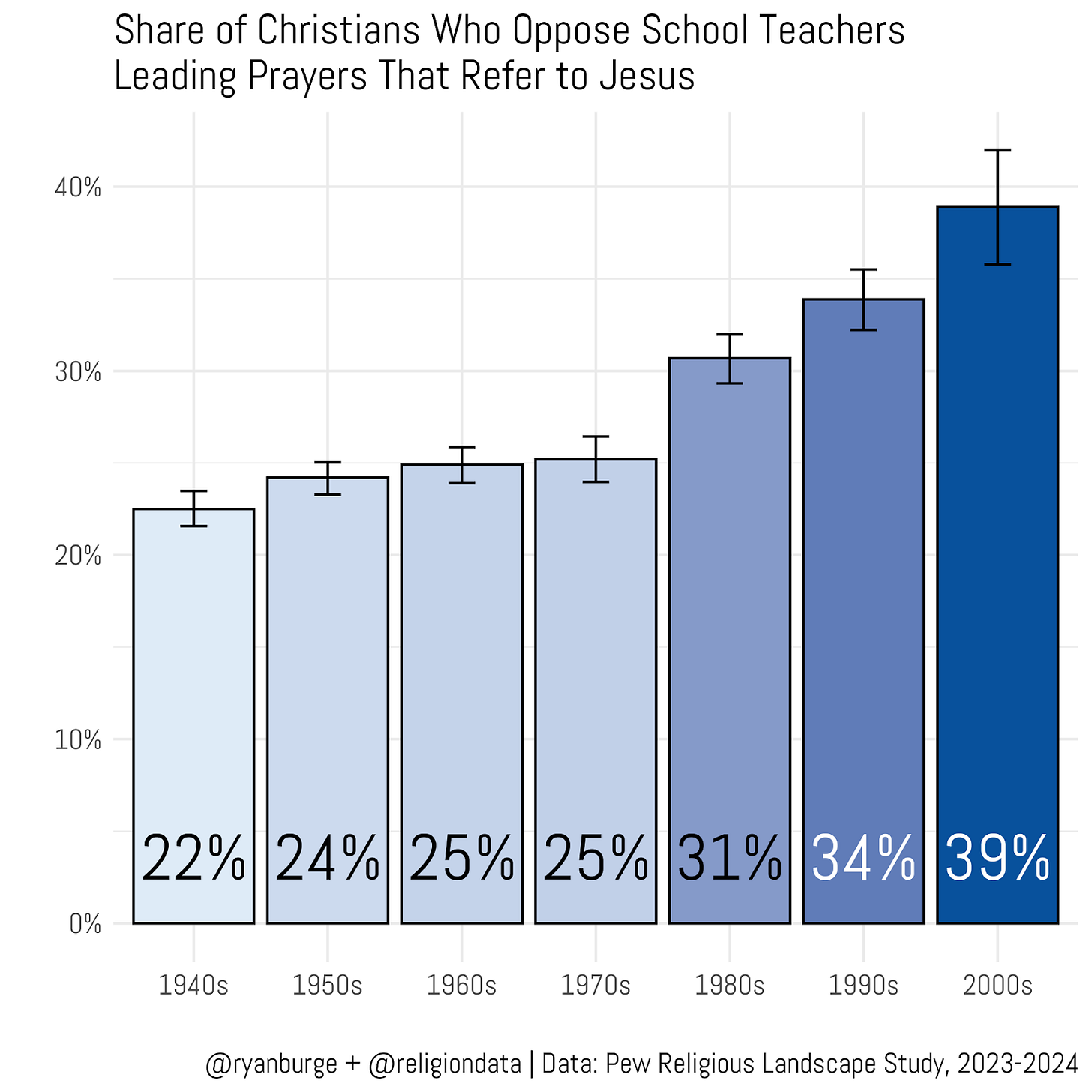
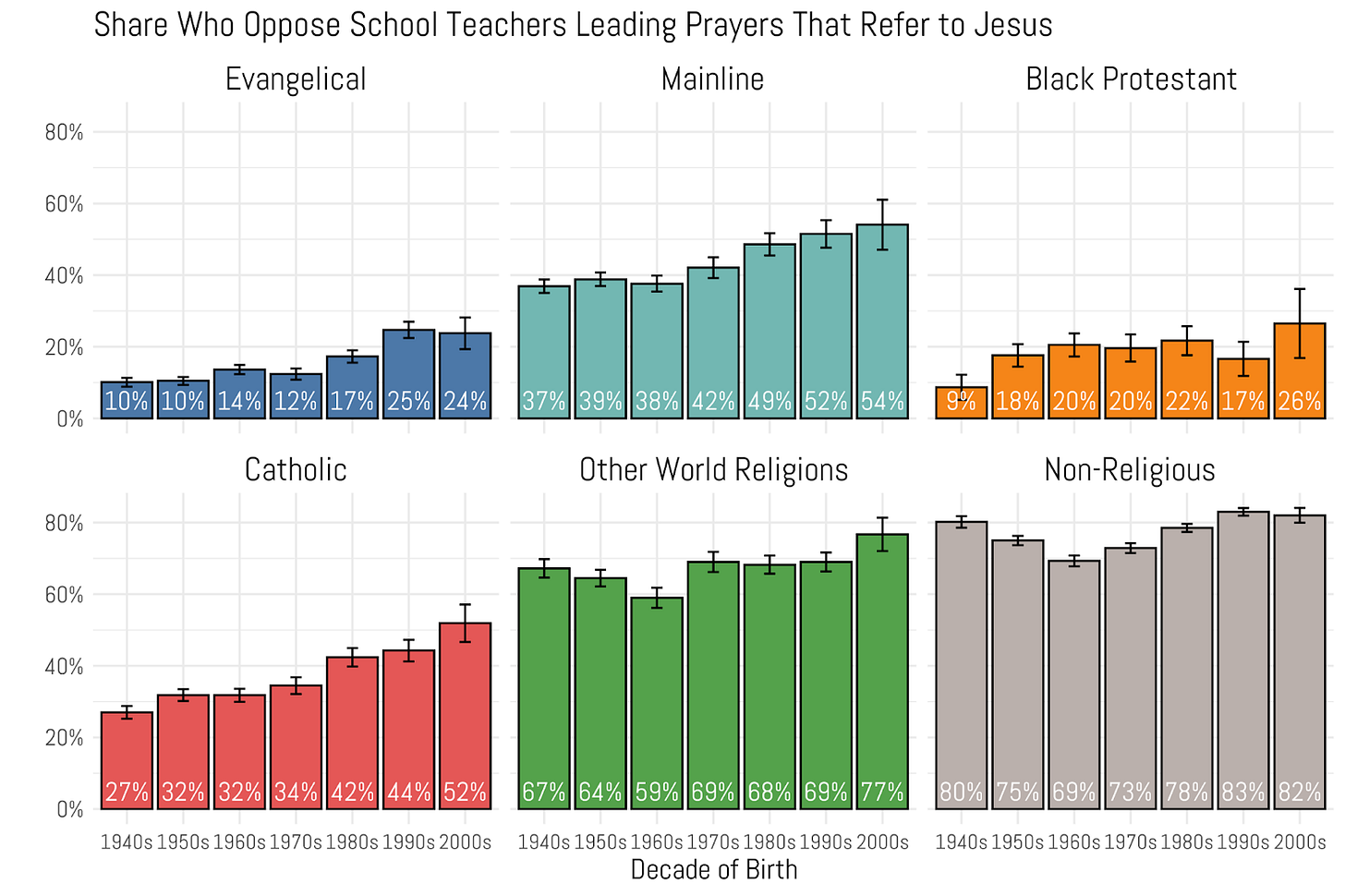
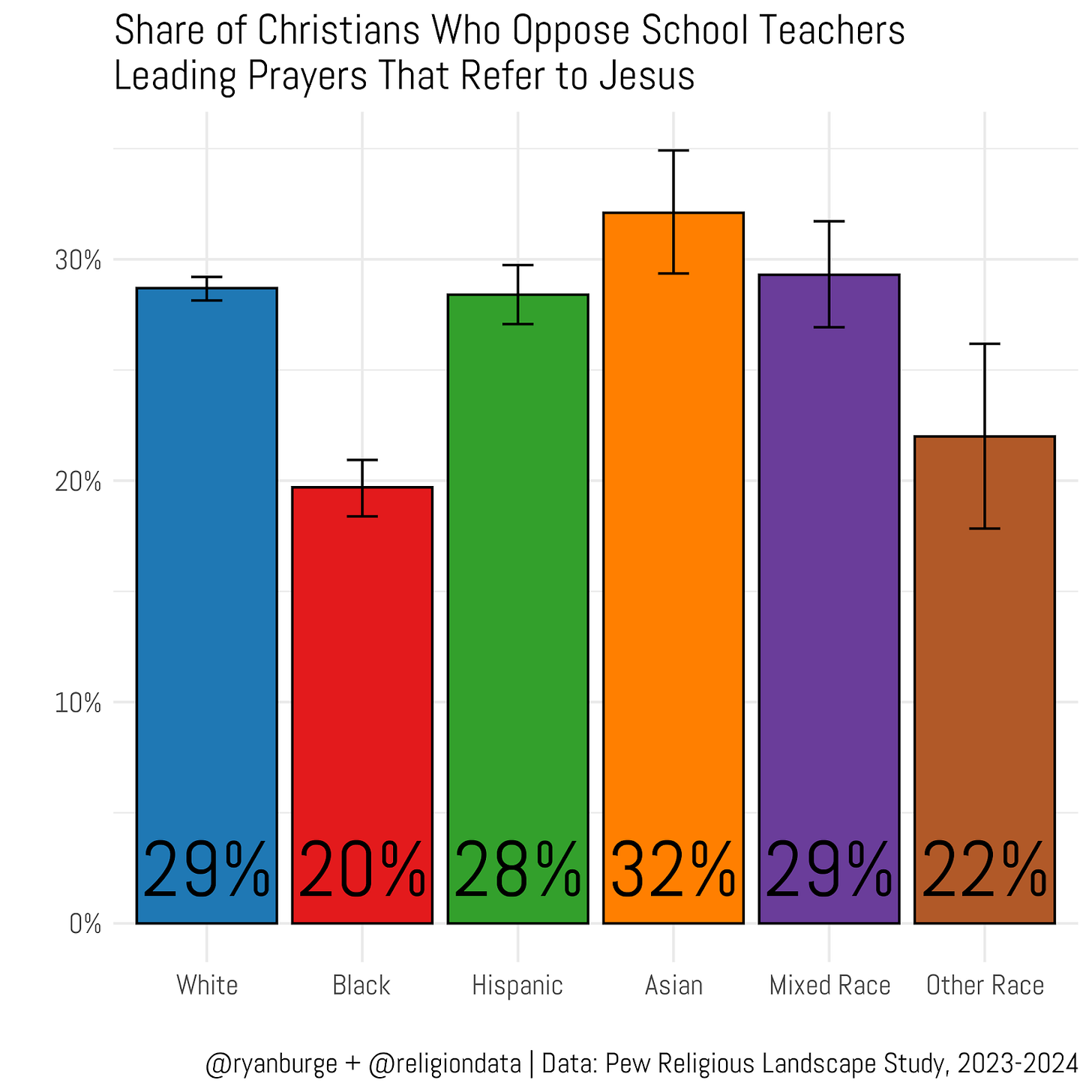
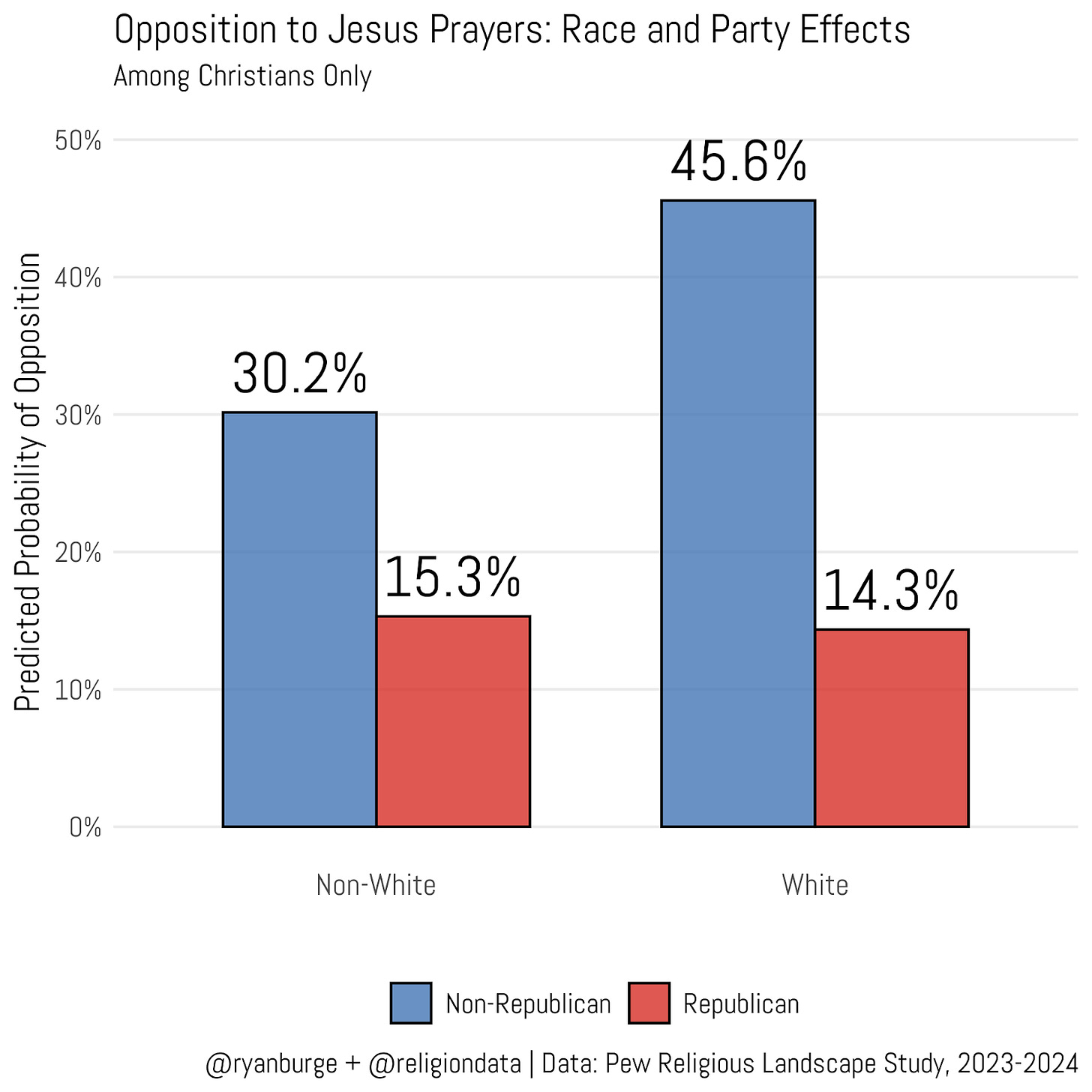


Excellen post. One of your best. The numerous Hindus, etc. who support school prayer are interesting.
This shows the importance of being specific, too. I'd like to see a poll asing about a specific prayer.
A relevant point is that most parents of children in public schools, particularly elementary schools, would have been born after 1980, that is, belong to the cohorts that are majority opposed.